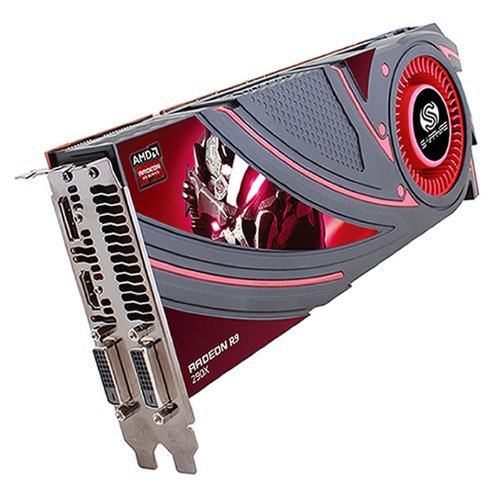Bigger is always better, right? When it comes to your graphics card, this isn’t always the case. Both AMD and NVIDIA use easily marketable combinations of letters and numbers to identify their GPUs, but this does not mean that the numbers are easy to understand. This article will explain the subtle nuances in the names of performance graphics cards.
Generally, larger numbers denote better performance. Within a generation of graphics cards this is easy to understand. It is obvious that the GTX 780 will perform better than the GTX 760, and that the R9 280X is faster than the R9 270. But how does the GTX 680 compare to the GTX 760? And the HD 6950 to the HD 7790? At first glance the performance of these two cards might not be easily discernible.
NVIDIA

NVIDIA’s card names look like this:
GT 610, GT 620, GT 630, GT 640, GTX 650, GTX 650 Ti, GTX 650 Ti Boost, GTX 660, GTX 660 Ti. All of these are part of the 600-series, since they start with 6. The 500-series cards would look quite similar, but start with 5: GT 520, GTX 560, GTX 560 Ti, and so on.
The first thing to notice is that some are “GT” cards, and some are “GTX”. The “GT” label is for lower-end cards, which are not meant to handle powerful games, but are more suited for office work and light graphics. GTX cards are more powerful, and aimed generally at gaming-oriented machines.
The first number (i.e. the 7 in GTX 760) denotes the generation of cards it belongs to, and can be used as a very general performance indicator. The 700-series cards are one generation newer than 600-series cards, two generations newer than 500 series cards, and so on. (Update: with the release of the 900-series cards, NVIDIA decided to skip naming any generation as the 800-series. So, you’re not crazy, there are no 800-series NVIDIA cards.)
The second number in the name (i.e. the 6 in GTX 760) indicates the performance level of the card. In this case, the “60” means it is classified as a mid-range graphics card. There are several levels of performance within each family of cards: 700-735 cards are considered low-end or mainstream cards, and will not perform well in demanding 3D applications. Cards in the 740-765 range are performance cards and are well-suited for comfortable frame rates at 1080p resolution. Enthusiast-class cards are the 770 cards and beyond, meant for high FPS and multiple monitors.
The “Ti” cards are a bit more powerful than the non-Ti cards with the same number. So a GTX 750 Ti is more powerful than a GTX 750. NVIDIA sometimes has a “Boost” edition as well: There is a GTX 650, and GTX 650 Ti, and a GTX 650 Ti Boost. The “Boost” version is more powerful than the non-“Boost” card with the same number.
So, is the GTX 680 faster than the GTX 760? The answer is yes, but only slightly. The 680 is a previous generation card and has more raw performance than the 760 (faster clock rates, more shaders, texture mapping units, and SMX units) however, this performance comes at the cost of higher thermal design power and power consumption compared to the newer GTX 760. If you wanted to overclock the 760, you could end up with a card roughly on par with the GTX 680 for significantly less money.
AMD

Until their latest generation of cards, AMD used a name scheme similar to the one NVIDI uses. They were named HD XXXX, where the first X represented the generation, and the next three described the relative performance of the card within that generation. So the 5000-series were named HD 5770, HD 5850, HD 5870. The 6000-series had HD 6850, HD 6870, HD 6950, HD 6970. For those old cards, the comparison was easy: As long as the cards were from the same series (5000, 6000 or 7000), then the higher numbered card was more powerful.
AMD’s new cards, on the other hand, are a whole different world. With their latest generation of cards, AMD adopted a new and very unique naming scheme. They follow the RN NNN(X) convention where the first N represents the overall performance level, and the next three Ns indicate varying degrees of power within that range of cards. An X at the end of the number refers to higher clock speeds, or a more powerful version of the card (R9 280 vs R9 280X)
At the time of writing, AMD’s new cards are R5 2XX, R7 2XX, or R9 2XX. The R5/R7/R9 are meant to help distinguish the target market, while the “2” means that all of these cards are from AMD’s 200-series. AMD’s next series will likely be called the 300-series, and will probably have card names that look like R5 3XX, R7 3XX, and R9 3XX.
R5-series cards are meant to be entry-level cards not used for gaming. They range from the R5 210 to the R5 235X. The mid-level cards span quite a distance, from the R7 240 (which is a relatively weak card) to the R7 265 which is a decent budget graphics card. The next series of cards can be subdivided into two categories. The R9 270 through R9 280X cards are high end units, capable of good FPS at 1080p resolution on medium to high settings. The R9 290 cards and beyond are meant for enthusiasts with a large amount of memory and plenty of raw horsepower.
The newest AMD cards aren’t easily comparable to previous generations which followed the HD XXXX naming scheme, which is similar to the one NVIDIA currently uses. Also, comparing cards across the different manufacturers requires a closer look at the raw specs to get the best idea of performance differences. Try and look for reviews from reputable reviewers to see how the card you intend to purchase compares to the competition.
